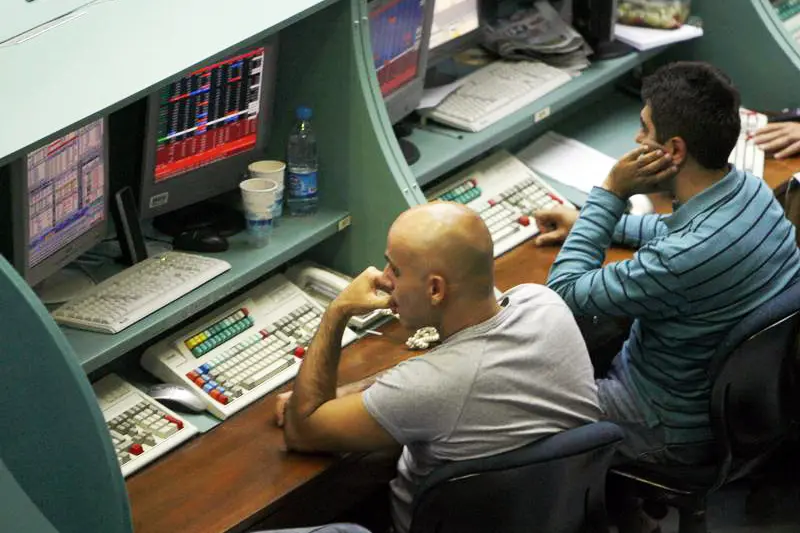PHOTO
JEDDAH -- The growth of Islamic banking in Turkey has markedly outstripped that of conventional banking over the past 10 years. The country's participation banks doubled their share in overall banking assets to over 5% by the end of 2015 from 2.5% in 2005. As of year-end 2015, the sector had a total asset size of $42.2 billion, around 5.6x its size at year-end 2005, S&P Ratings said in its latest report on the emergence of Islamic banks.
Since the inception of Islamic banking in Turkey in 1985, Islamic banks have largely grown on the back of privately owned capital, particularly through entities that are related to the GCC such as the Islamic banks in Kuwait and Bahrain. Government or public sector banks had no Islamic lending operations until very recently.
After peaking at 5.5% in 2013, the sector's market share seems to have receded slightly to 5.2% in 2014, and 5.1% in 2015. These data have to be interpreted cautiously though, as the decline is largely the result of a significant balance sheet deceleration by Asya Katilim Bankasi A.S. (not rated), which has experienced major difficulties over the past few years. Excluding this impact, the country's Islamic banks have continued to expand their balance sheets at a fast pace. We expect Turkey's economic growth to average above 3% over our forecast horizon of 2016-2019. However, we still expect a slowdown in credit growth compared with the recent years. Given the additional capital of the two new participation banks, we believe the overall growth rates in advances generated by the participation banks as a whole will remain above the growth rate of the Turkish banking sector.
Albaraka Turk Katilim Bankasi AS (BB/Negative/B) started up the Islamic banking market in Turkey, in 1985. Other Islamic banks have come into operation since then, and currently six Islamic banks operate in Turkey, with total assets of $42.2 billion at year-end 2015.
In 2015, two participation banks launched their Islamic banking operations. Ziraat Katilim Bankasi AS, the wholly owned subsidiary of state-owned Ziraat Bank (not rated), one of the country's largest lenders, started its operations in 2015. It already had around 33 domestic branches at year-end 2015 according to the Turkey Participation Banks Association. Similarly, Vakif Katilim Bankasi A.S. started providing Islamic banking services in 2015 and "we understand it is planning to open multiple branches over the next few years. We believe the emergence of new Islamic lenders as capital providers in the Turkish Islamic banking market will further contribute to the growth rates of Islamic banking." Total shareholders' equity of the privately owned Islamic banks in Turkey was around $3.5 billion at year-end 2015 (Bank Asya's financials are dated as of Sept. 30, 2015), while the paid-in capital of Ziraat Katilim and Vakif Katilim, the two new Islamic lenders was around $508 million at the same date, which means a 15% increase in the aggregate capital base of Islamic banks in Turkey.
"We understand both of these institutions are targeting growth rates that are above the general sector average over the next few years. We believe rather than simply grabbing market share from the existing participation banks, these two institutions will also capture market share and clients from conventional banks as a result of the additional marketing and distribution capacity they generate in the market."
Sukuk issuance has been growing in Turkey and we expect this trend to continue. Total issuance out of Turkey reached a cumulative $12.9 billion between 2010 and 2015. Kuveyt Turk started the ball rolling in 2010 with $100 million, followed by two other sukuk in 2011, and then a few government issuances.
Turkish participation banks benefited from the appetite of investors to boost their capital adequacy through sukuk issuance amid the depreciating Turkish lira in 2014-2015 (see chart 2). They were also aided by government reforms that introduced a friendlier regulatory framework for sukuk issuance, implemented in 2010 and 2013.
"We believe that sukuk issuance could help Turkey to further diversify its investor base and reach investors that are prohibited from dealing with conventional products."
For instance, the $1 billion Turkish sovereign sukuk issued in 2014 attracted $3.4 billion and was 37% subscribed by investors based in the Middle East. Nevertheless, total sukuk issuance plummeted in 2015 and this trend continued in the first half of 2016. Low conventional interest rates, certain issues specific to the sukuk market such as the complexity related to structuring versus conventional bonds, and the drop in the growth rate of participation banks explain this trend. On a positive note, as the participation bank sector continues to develop, "we think that sukuk issuance is likely to increase again in the medium term. We believe that the government will look again at the sukuk market as an alternative way to raise financing while offering liquidity management instruments to participation banks.
Participation banks will come back to the market issuing capital-boosting sukuk to raise longer-term funds and continue to finance their growth. We do not expect any major activity from corporates, however."
"We see Qatar as an interesting comparison with Turkey, as recent government initiatives there have led to significant growth of Islamic banking. In 2011, the Qatar Central Bank banned conventional banks from extending Islamic banking products through what are called "Islamic windows" in the onshore conventional banking system, thereby requiring conventional banks to close or divest their Shariah-compliant businesses and not underwrite any new Sharia-compliant loans. As a result, Shariah-compliant banking shifted to the Islamic banks," the report noted.
Furthermore, in 2012, the Qatari government embarked on a treasury bill issuance program to help the country's local conventional and Islamic banks to manage their liquidity.
Some of the issuances under this program are structured in the form of sukuk for the country's Islamic banks. Supported by these government actions, the Islamic banking sector in Qatar has grown more quickly than the banking sector as a whole over the past few years. In 2006, the Qatar Central Bank began to report key balance sheet metrics for each of the Islamic banks. These figures show that the Qatari Islamic banks' market share in domestic credit increased from 13% in 2006 to 29% at the end of 2015.
Although Turkey's overall economic structure and demographics are distinctly different from those of the GCC countries, we expect the Turkish Islamic banks' market share to double to more than 10% by year-end 2025. In particular, we expect the additional capital that will be deployed by new participation banks to provide important stimulus for the sector.
Nevertheless, although we expect economic growth in Turkey to average above 3% per year over our forecast horizon of 2016-2019, we also expect to see a distinct slowdown in credit growth after years of fast-paced growth.
This means that, although we expect Islamic banks to continue to capture overall market share in Turkey's banking system, we still expect average growth rates for the Turkish banking system to decelerate to around 11% between 2016 and 2019. Regulations aimed at curbing rapid growth in retail lending and stricter regulatory capital requirements -Turkey is now officially a Basel III compliant country - will also act as impediments. Nevertheless, we expect the participation banking system's credit growth to remain well above the rates displayed by conventional peers.
© The Saudi Gazette 2016












